Design development
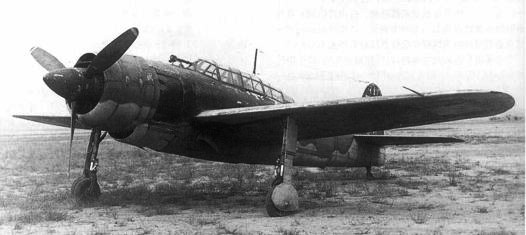 The Yokosuka deserves attention not only because it is considered one of the most beautiful aircraft of the Second World War but also because of her heavy burden: Replacing the legendary Aichi D3A "Val" in service with the IJN since 1939. The famous fixed-undercarriage Japanes "Stuka" did all the heavy lifting in the early years of fighting (1941-43) with quite a tally at Guadalcanal, but not only. Both the USN and IJN staff after these early all-aircraft naval battles, epsecially after Midway, arrived to the same conclusion, that the dive bomber was less vulnerable and more efficient than torpedo bombers.
The Yokosuka deserves attention not only because it is considered one of the most beautiful aircraft of the Second World War but also because of her heavy burden: Replacing the legendary Aichi D3A "Val" in service with the IJN since 1939. The famous fixed-undercarriage Japanes "Stuka" did all the heavy lifting in the early years of fighting (1941-43) with quite a tally at Guadalcanal, but not only. Both the USN and IJN staff after these early all-aircraft naval battles, epsecially after Midway, arrived to the same conclusion, that the dive bomber was less vulnerable and more efficient than torpedo bombers.
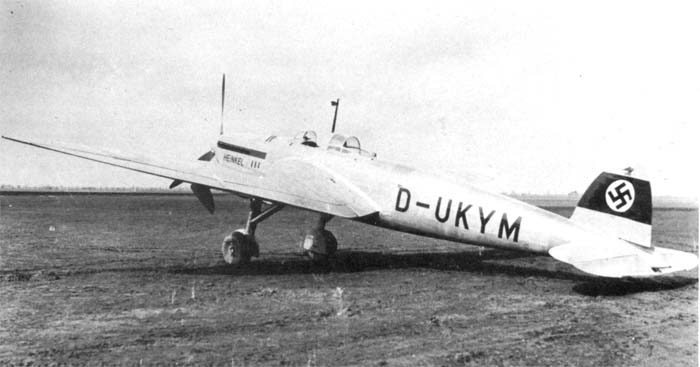
Heinkel He 118
But replacing the D3A was a task already though well before this, in fact as soon as the D3A ended development and neared production. Indeed, a retractable undercarriage variant of a two-seat carrier-based dive bomber was developed by the Yokosuka Naval Air Technical Arsenal for the Imperial Japanese Navy in 1938. The first D4Y1 prototype was even complete in November 1940 and made its maiden flight at Yokosuka in December. However its development was long and it only entered service in 1942, starting replacing the battered "Val", now slow and a easy prey for US fighters on frontline carriers.
An inline engine oddity
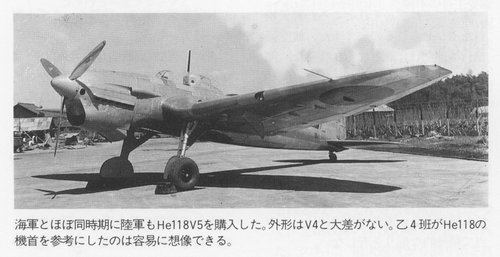
The v4 prototype with Japanese markings, before being tested (and crashed). It was replaced by the BV4.
The D4Y development was largely inspired by German engineering, as was the D3A for Aichi by the Junkers Ju 87. The Yokosuka D4Y is remarkable in many ways and full parallels with another famous model. Along with the army's Ki-61 fighter, it was indeed one of the very rare equipped with a liquid-cooled engine. In the end both of received traditional air-cooled radial engines however, leading to Ki-100 fighter and D4Y3 bomber, both excellent anyway. The Judy was designed as a bomber but also reconnaissance model and by 1945 it's performances were good enough to motovate the creation of an efficient night fighter equipped the same way as specialize types in the Luftwaffe by 1945.
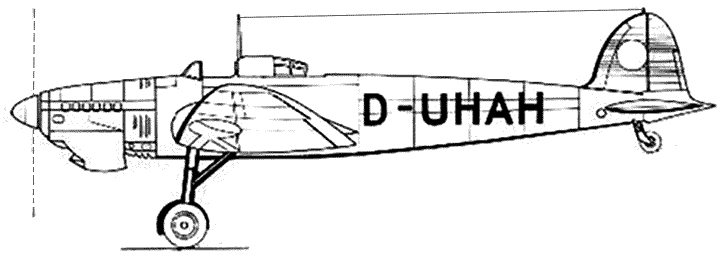
The V2 prototype shown to the Japanese at Heinkel in 1937. The He 118 was largely inspired by the superbly aerodynamic He 70 and shared a lot with the He 112, also imported and used as a base for the Japanese Ki-61 Fighter.
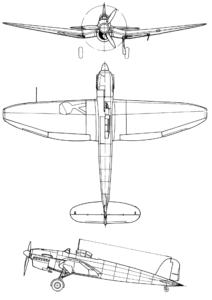 The initial project was developed under strong German, influence bac in 1931, when the IJN ordered from Heinkel a first dive bomber designed Heinkel He 50. This biplane was subsequently modified by Aichi and put into mass production as the D1A1. The D3A1 was inspired as said already by the Heinkel 87, and while it was still being tested, the Imperial Navy already planned its potential replacement. So from 1936, a group of specialists from Aichi and the 1st Naval Aviation Technical Arsenal led by engineer Macao Yaman (future designer of Suisei) visited Heinkel in Rostock. Immediately they were smithened by the new He 118 dive bomber in development, which had an inline engine, and was a small sharp-nosed monoplane with retractable landing gear. Looking sleek, elegant and fast, it looked very much like a fighter, not a bomber.
The initial project was developed under strong German, influence bac in 1931, when the IJN ordered from Heinkel a first dive bomber designed Heinkel He 50. This biplane was subsequently modified by Aichi and put into mass production as the D1A1. The D3A1 was inspired as said already by the Heinkel 87, and while it was still being tested, the Imperial Navy already planned its potential replacement. So from 1936, a group of specialists from Aichi and the 1st Naval Aviation Technical Arsenal led by engineer Macao Yaman (future designer of Suisei) visited Heinkel in Rostock. Immediately they were smithened by the new He 118 dive bomber in development, which had an inline engine, and was a small sharp-nosed monoplane with retractable landing gear. Looking sleek, elegant and fast, it looked very much like a fighter, not a bomber.
Despite of this, the competion winner was the model 87 instead, and this "freed" the unbuilt He 118 for any sell abroad. So by February 1937, the Imperial Navy acquired the prototype Heinkel He 118V4, and acquired a production license. It was designated designation "DXHe-1" for "attack aircraft marine experimental type He" by the spring of 1938. The DXHe-1 was a single-engine, all-metal low-wing monoplane with a wide-track retractable undercarriage, wing-mounted dive brakes, crew of two (pilot, navigator/radio-operator/gunner) under a glazed canopy, telescopic bombsight and for engine, an Aichi Atsuta liquid-cooled inverted V12 engine, licensed copy of the German Daimler-Benz DB 601 rated at 1,200 hp or 895 kW and with the radiator mounted behind/below the propeller.
First tests and prototype work
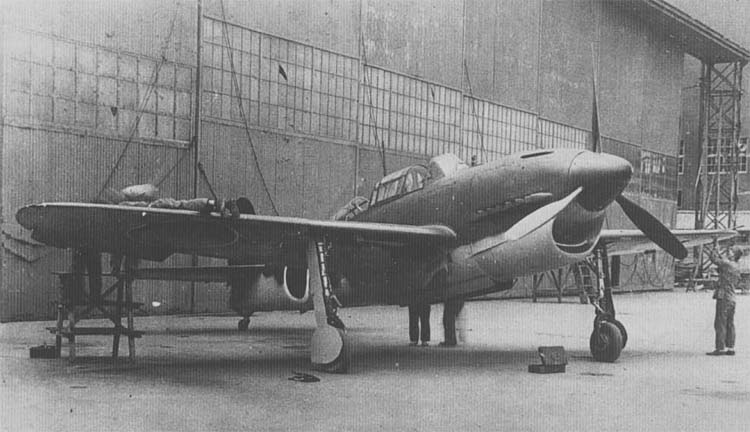
The flight tests of DXHe-1 went awry when a crash was provoked by the apparent overload of the horizontal tail as witnessed fom the ground. The model in additional was soon considered too heavy for aircraft carrier service and this put an end to plans to have it in licensed production at Hitachi. Soon after however was purchased the 118V5. Despite failing to replicate the He 118, a detailed acquaintance with Heinkel gave extra documentation for the IJN staff, a wealth of information to reshape the project by the end of 1938. This helped drafting specifications 13-Ci. It was required to create a two-seat carrier-based dive bomber with the following characteristics: -Top speed 518 km/h (mph)
-Cruise speed 426 kph (mph)
-Flight range with a 250-kg bomb 1,480 km and in reconnaissance, 2,220 km ( miles)
-Smaller dimensions than the He 118
-Maximum bomb load of 500 kg*
-A defensive armament of three machine guns (two in the wings, one aft cockpit).
*The 500 kgs AP bomb was judged capable to defeat the armored deck of the new British aircraft carriers of the Illustrious class.
On a non-competitive basis, the 1st Naval Aviation Arsenal in Yokosuka received the assignment for the new dive bomber drawing. It was designated D4Y1 "Suisei" ("Comet") and created by a team of designers led by Macao Yaman. Although it borrowed most design solutions from the He 118, it became very compact and had all-metal medium wings, with very reduced wingspan, even smaller than the A6M2 Zero fighter, dispensing with consoles folding mechanism, thus keeping the wings unfoldable for extra rigidity and saving weight. It was even more compact than the D3A1 but the designers managed the tour de force of filling it with more fuel, and also allocating an internal bomb bay for streamlining the fuselage, capable of holding a 500-kg bomb. The "Susei" inherited also from the German prototypes an advanced wing mechanization with each console being given three electric aerodynamic brakes.
The Bomb armament could be completed as for the "Val" by a pair of 30-kg or 60-kg bombs on underwing racks. A significant step forward overall since the "Val" only carried a 250-kg bomb or had to compromise with incomplete refueling. Small armament remained the same howevern with two 7.7 mm type 97 LMGs and the rear flexible-mounted 7.92 mm type 1 machine gun at the rear of the cockpit.
Design choices

D4Y3 pulling up
Each firm independently adapted the Heinkel technical documentation, so that in the end two different engines were obtained and in addition, neither Kawasaki nor Aichi purchased a direct injection license from Bosch. The Na-40 had a similar system designed by Mitsubishi specialists but for Atsuta it was an unlicensed copy of the German model, unsuccessfully introduced at Aichi. In the end, the Mitsubishi injection system was adopted.
By the time the first pre-production "Suisei" was built, the Atsuta 21 engine rated for 1,200 hp was installed for test, but it has not yet entered production. Therefore the first prototype, as well as the four subsequent ones were equipped instead with proven Atsuta 11 engines, in fact a DB600G engine rated for 960 hp in disguise. A batch of these were indeed purchased in Germany and soon Atsuta 12 engines (imported DB601A) were also used for pre-production.

D4A1 at Takeoff
The first prototype was completed in November 1940, and the following month it flew for the first time. Prospects were estimated so highly that back in September an order was given to stop the production of D3A1 "Val" already, counting on the introduction of the new Suisei into production. But bottlenecks in engines production doomed this hope and throughout 1941, Aichi handed over only 22 Atsuta 21 engines to military acceptance, with full-fledged serial production only starting by May 1942, with 15 Suisei handed over... in a month. By the end of 1942, production rate reached 30 per month, and in total, by September 1944, 835 had been assembled. As a result, production of the now obsolete D3A1 went on by May-July 1942, with 70 more "vals", and in August Aichi launched the much improved D3A2 into production, integrated many design features borrowed from the Suisei.
Further developments
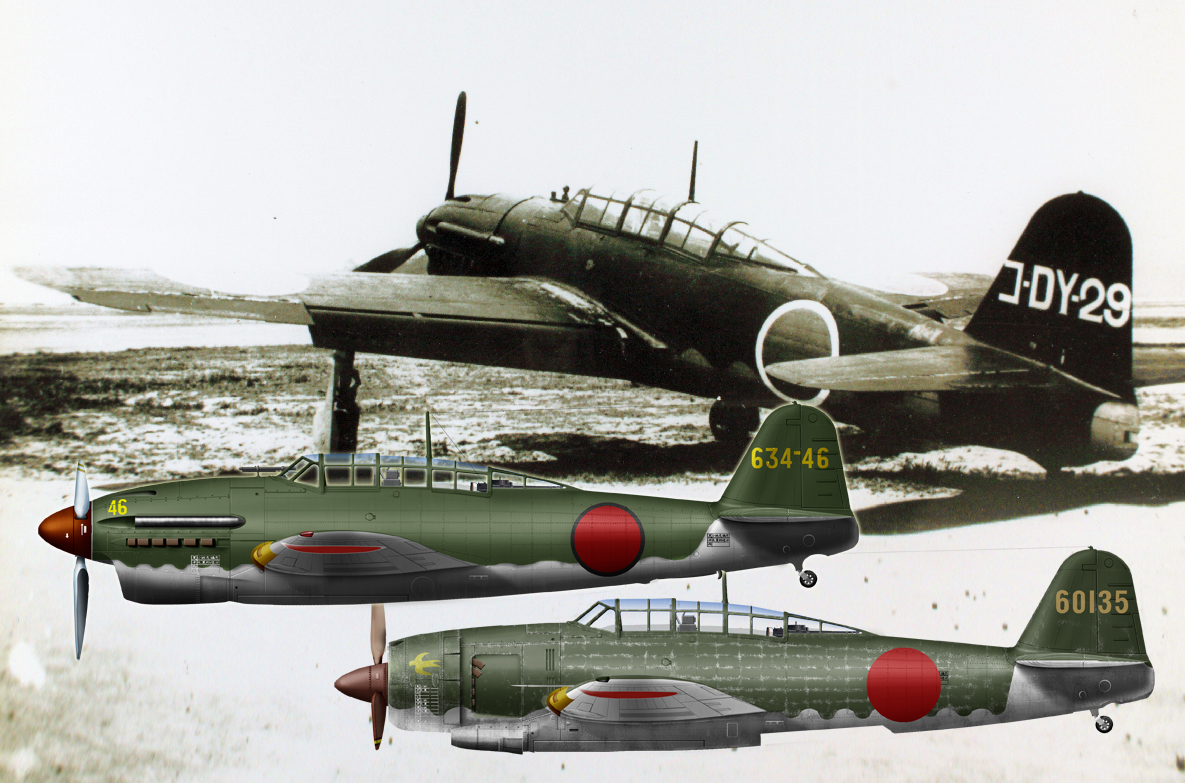
Production
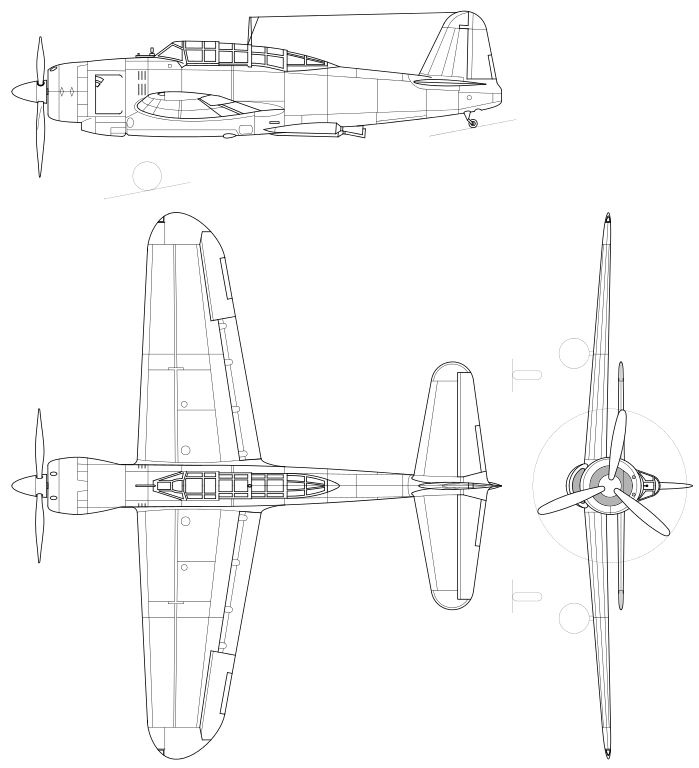
Yokosuka D4Y-4
Serial production of the D4Y1 was prepared at the Aichi plant but during the testing, a number of issues were revealed. On the one hand it was praised for outstanding performances and flight characteristics, and good control in level flight. But when diving there was a clear flutter leading to cracking in the structure. The designers eliminated gradually the shortcomings and decided to completed the already started aircraft as a carrier-based reconnaissance model first, so not having to dive.
The first reconnaissance models were third and fourth prototypes re-equipped in the spring of 1942. They received the "regular" Atsuta 21 engine but also an additional fuel tank installed in the bomb bay, and had strenghtened underwing locks for the two 330-liter fuel tanks. Armament was retained, but a photographic equipment was prepared, but not installed. The scout demonstrated excellent caracterstics, like reaching a top speed of 546 km/h at low altitude, better than the latest A6M3 fighter.
Design
Powerplant
 D4Y1-2: A1E11 Atsuta 21
D4Y1-2: A1E11 Atsuta 21The power plant was atypical for Japanese aircraft due to its inline configuration. It was based on the German 12-cylinder liquid-cooled Daimler-Benz DB601A. Due to the peculiarities of the Japanese aircraft industry at the time it was introduced into production simultaneously and independently by two firms, Kawasaki which delivered a unit based on the DB601A under the designation "Na-40" for the army and for the Navy, Aichi was in charge of the AE1A "Atsuta 21".
Not only production was slow, but quality control was lacking (ase revealed by post war US examination) and serious problems (bot for Aichi and Kawasaki production) were soon identified: There was a too close tolerance fit between the crankshaft and its bearings, making it likely to crankshaft failure. Production in 1945 in addition went to a standstill due to the bombing campaign. Maintenance difficulties eventually also led to the installation of the more reliable Mitsubishi Kinsei 62 radial on the D4Y3 Model 33 (and the simialr happened for the Kawasaki Ki-61). D4Y-3+: Mitsubishi Kinsei 62 The last and best of the Kinsei serie started in 1932. The Kinsei 62 (MK8P) was rated for 1,350 hp (1,010 kW) at 2600 rpm at 2,000 m (6,600 ft) or 1,250 hp (930 kW) at 2600 rpm at 5,800 m (19,000 ft) and the improved Kinsei 62 Ru (Ha-112-II Ru) with compressor, reached 1,350 hp (1,010 kW) at 2600 rpm at 2,000 m (6,600 ft) and 1,370 hp (1,020 kW) at 2600 rpm at 7,700 m (25,300 ft). The 1945 produced D4Y3KY night fighter had the latter.
Armament
The basic armament of the model was three machine guns: Two forward-firing 7.7 mm Type 97 aircraft machine guns in the wings, acted by the pilot, quite weak to down a Wildcat or Hellcat, and a single rearward-firing 7.92 mm Type 1 machine gun on a flexible mount. It was stored inside the cockpit, barrel down, and pull up and raised when the rear cocpit canopy was open. As for Bombs, when fixation issues were solved, the D4Y had in standard a single 500 kg (1,100 lb) bomb in its bomb bay, or two smaller 250 kgs bombs, plus four small ones underwing. However in practice they were practically never installed.In 1945 a new tailored version for Kamikaze attacked was developed with up to 800 kg (1,800 lb) of bombs plus addtitional rocket boosters, not for taking off, but to speed the plane up during the final approach on target (more on the variants topic).
Variants
- D4Y1 Type 13 (13-Shi Kanjō Bakugekiki): Experimental dive bomber prototypes (5 built) N°1,2 bombers, N°3, 4 recon models tested on IJN Soryu in 1942.
- D4Y1-C Type 2 Model 11: Production version, carrier-based reconnaissance model, 1942.
- D4Y1 Suisei Model 11: First Dive bombing version with the AE1A Atsuta 12 engine, from December 1943.
- D4Y1 KAI Suisei Model 21: Same but with ejection launch system for the battleship Ise and Hyuga.
- D4Y2Suisei Model 12: Aichi AE1P Atsuta 32 engine, from October 1944.
- D4Y2a Suisei Model 12A: Same with Type 2 rear 13 mm machine gun.
- D4Y2 KAI Suisei Model 22: Evolution of the type planned for Ise and Hyuga.
- D4Y2a KAI Suisei Model 22A: D4Y2/D4Y2a upgraded for ejection launch from Ise-Hyuga.
- D4Y2-S Suisei Model 12E: Interceptor variant with a 20 mm Type 99-2 cannon installed obliquely behind the pilot's, +4 guides for 9-kg missiles Type 3 No.1 Model 28 Mk.I underwings.
- D4Y2-R Type 2 Model 12: Reconnaissance version of the D4Y2 developed in October 1944.
- D4Y2a-R Type 2 Model 12A: Reconnaissance version of the D4Y2a.
- D4Y3 Suisei Model 33: Dive bomber version with the radial Mitsubishi MK8P Kinsei 62, not carrier capable.
- D4Y3a Suisei Model 33A: Same with the Type 2 rear 13 mm machine gun.
- D4Y3 Suisei Model 33 Night Fighter (Suisei 33-Gata Kaizō yasen): D4Y3 modified as the D4Y2-S. Two only converted.
- D4Y4 Suisei Model 43 : Special kamikaze version with single-seat, no forward armament, no bomb bay doors, three solid rocket boosters behind.
- D4Y5 Suisei Model 54: 1825 hp Nakajima NK9C "Homare 12" engine with 4-bladed propeller project. Never produced.
Evaluation and assessment
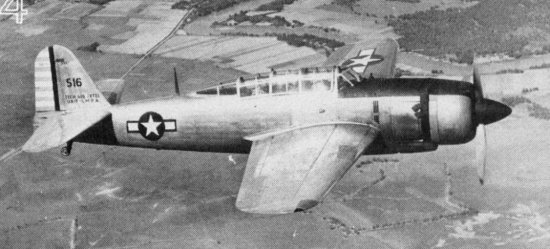
Detailed specs
D4Y-1 specs | |
| Crew: | 2: Pilot, Observer/navigator/MG gunner |
| Fuselage Lenght | 10.22 m (33 ft 6 in) |
| Wingspan | 11.5 m (37 ft 9 in) |
| Wing area | 23.6 m2 (254 sq ft) |
| Height | 3.74 m (12 ft 3 in) |
| Empty weight: | 2,440 kg (5,379 lb) |
| Max takeoff/gross weight: | 4,250 kg (9,370 lb) |
| Propeller: | 3-bladed metal propeller |
| Engine: | Aichi Atsuta AE1P 32 V-12 inverted liquid-cooled piston engine, 1,000 kW (1,400 hp) |
| Top speed: | 550 km/h (340 mph, 300 kn) |
| Climb rate: | 14 m/s (2,800 ft/min) |
| Endurance: | 1,465 km (910 mi, 791 nmi) |
| Service ceiling: | 10,700 m (35,100 ft) |
| Wing Loading: | 180 kg/m2 (37 lb/sq ft) |
| Power/mass: | 0.25 kW/kg (0.15 hp/lb) |
| Armament: MGs | 2× fwd 7.7 mm Type 97 MGs, 1× aft 7.92 mm Type 1 MG |
| Bombs | 500 kg (1,100 lb) in bomb bay |

D4Y1-C Type 2 model 12 in Rabaul under maintenance, Colorized by Irootoko Jr.
The D4Y in action
D4Y-1C combat debuts
The first two prototypes of reconnaissance models were tested on IJN Soryu before the Battle of Midway. Only VI-201 carried out combat sorties and on June 4 piloted by Lieutenant Masatada Iida and navigator Isamu Kondo they spotted the American aircraft carrier formation 120 miles from Midway and sent a radiogram but it was not receive it. This couyld have been a history-turning event. Back "home" the crew saw their carrer engulfed in flames and the flight deck too damage to land so they aimed at surviving IJN Hiryu.After refueling the same took off for another reconnaissance flight but there was no carrier at her return and it was forced to do in a forced splashdown. The naval staff however believed this was enough to prove the D4Y1 showed outstanding performance with a better radius of action than the Nakajima B5N2 used prior to this. On July 6, 1942 it was definitely adopted as standard "carrier-based reconnaissance aircraft marine type 2 model 11" (D4Y1-C). It was only replaced in this role from February 1944, by the Nakajima C6N Saiun 'Myrt'
Unlike the prototypes, the production models received their intended photographic equipment, K-8 camera (250 mm/500 mm lens) manufactured by Konika under license from Fairchild. But production of the new model was painully slow with just two in October and two delivered by November 1942, five in December and in total 34 until April 1943. After the issues were fixed, the bomber version followed and production accelerated slightly.
In the spring of 1943, several of the C version entered the instructor and test unit and some went to coastal reconnaissance units starting with the 151st Kokutai (12 D4Y1-Cs) operating from Rabaul, and later redeployed to the Carolines.
In October 1943 they arrived to the 121st Kokutai (12 aircraft, then 24 by January 1944) until adopting the Nakajima C6N1. At the time of the Mariana Islands campaign, the 121st Kokutai had 20 models, both C6N1 and D4Y1-Cs. The unit was wiped out. Frim early 1944 two more Kokutai received the D4Y1-C, the 153rd from January and 141st in March with 24 each. The first soldiered in New Guinea, Marianas, Philippines, Formosa (Taiwan), and Japan, while the second remained in the Philippines by January 1945 and was wiped out there. Overall impression all this time was very positive. Pilots loved its ease of operation and high performance, only criticizeing the usual lack of armor protection and gas tank protection while the technical staff complained about the Atsuta 21 engines as seen above. Part of it was their lack of experience in operating liquid-cooled inline engines that were a rarity in the IJN.
D4Y-1 Bomber debut
As production of the suisei started at Aichi, designers of the 1st Naval Arsenal continued improve its diving performances, managing to have the wing structure strengthened, and aerodynamic brakes improved. By March 1943, the "sea bomber Suisei model 11" or D4Y1 entered service with the production starting by June 1943, and by May 1944, Aichi managed to produce 666 or 705 according to sources of D4Y1s, with a few D4Y1-C alongside. By that time, one year after Midway, the situation of the IJN worsened, and the fleet was left with only the Shokaku class and a motley collection of converted carriers.Dive bombers were a precious commodity, and despite the young age and inexperience of the pilots, they were thrown into battle as soon as possible as the D3A2 "Val" was at the end of its rope. By July 1943 three Kokutais, 510th, 531st and 552nd (27 active, 9 spare each) were equipped, and from January 1944 this was doubled. The 501st Kokutai saw action from Truk Atoll, Rabaul and the Marianas until disbanded in July 1944. The remaining fought in February-March 1944, the 531st Kokutaiin the Marshall Islands, and the 552nd in the Marianas. Both were virtually wiped out and not reconstituted.
By August 1943, the 521st Kokutai started to receive its own, but switched to P1Y1 twin-engine bombers and handed over its "suisei" to the newly formed 523rd Kokutai which had 48 aircraft (36 main, 12 reserve), doubled from February 1944, but this theoretical strenght was never achieved. The 523rd kokutai was bled white at the Marianas, based on Tinian (40 D4Y1 destroyed).
In September, the 502nd Kokutai also obtained the new D4Y-1 and from October, the 503rd as well, both with the nomonal strenght of 48, in reality far less. The 502nd Kokutai as stationed in Formosa, before being reassigned to the Philippines from October 1944 and destroyed there. The 503rd Kokutai had 22 D4Y1 when defending the island of Biak onMay 27, 1944. 2/3 were lost. The 7 surviving "suisei" took part in the battle for the Mariana Islands and by July 10, the 503rd kokutai was disbanded.
By the start of 1944, the production rate reached 90 per month, making it possible by February-March to re-equip 7 Kokutai at once. The 553rd Kokutai was formed with it in the Philippines (48), but was disbanded in October, crippled, with the remnants completing the 701st Kokutai on Formosa. Also in the Philippines was the 762nd Kokutai, with 33 Suisei operational from October 1944. From March to July 1944 the 541st Kokutai also received its 48 D4Y-1s and by March 1944, the 302nd Kokutai was formed in Japan. Previously it was a home fighter squadron.
Carrier-based D4Y-1s
These were all ground-based as carriers as said above became rare commodities, butin early 1944, the 601st kokutai was at last assigned to the 1st aircraft carrier squadron composed of IJN Taiho, Shokaku, and Zuikaku, the cream of the IJN. This unit was split in three hikotai with 27 D4Y1 and 3 reconnaissance D4Y1-C each, 90 total. But when thrown into battle in the Marianas, it was down to 70 suisei, including 20 reconnaissance and still 9 worn out D3A2s. 11 served with a single D3A2 with the 653rd kokutai formed in March 1944 for the 2nd aircraft carrier squadron composed of IJN Junyo, Hiyo and Ryujo. In the 652nd kokutai, making the 3rd squadron of aircraft carriers with IJN Chitose, Chiyoda and Zuiho, having too small take-off decks, no dive bombers were assigned only fighters. By June 1944, all three were deployed in the battle for the Mariana Islands. The united aircraft carrier formation under Vice Admiral Ozawa combined 436 aircraft, and this included 73 "suisei" (57 bombers, 16 reconnaissance). It had support from the 61st air fleet based island airfields, two kokutai, 523rd bomber had 40 D4Y1 and the 121st had 10 D4Y1-C. Starting on June 11, 1944 heavy strikes against Japanese coastal defense facilities already eliminated a large part of the land-based models, and from June 15, the landing started and mixed attack air groups were thrown against the US aircraft carriers, the first wave comprising six Suisei. Only one manage to get close enough to obtain a near-misse at the USS Enterprise.In addition to the Soryu, Shokaku, Zuikaku, Taiho, Junyo, the Suisei from 634 Kokutai were based on the converted hybrid battleships IJN Hyuuga and Ise but saw no action. They were of the rare catapulted type (no floats, this was a one way ticket).
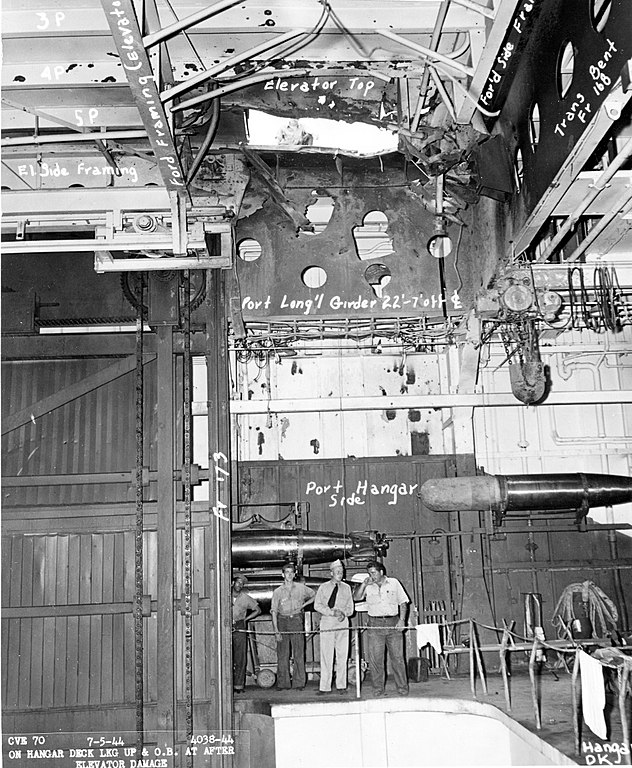
Battle damage at USS Fanshaw Bay
Two days later, a group of 17 D4Y1s and a two P1Y1s escorted by 31 A6M5 attacked the escort aircraft carriers and achieve surprise as they were less well equipped for radars. Divided into groups of two or three aircraft they arrived from different directions simultaneously but this did not compensated for their inexperience and most of the crews missed. Only one 250-kg bomb hit USS Fanshaw Bay, going through its deck aft and exploding inside the hangar. 11 sailors were killed, the explosion was contained, no fire managed to explode ordnance. She survived for the ordeal of the battle of samar.
On June 18, the fleet carriers sent 13 D4Y1-C for reconnaissance and soon 43 were in the air to search for the enemy, including 11 Suisei. US CAPs Hellcats shot down 3 D4Y1-Cs, and another crashed for technical reasons. Surviving crews were able to report their positions.
Strike groups took off from the Japanese carriers, largest of which, the 601st Kokutai included that day 53 D4Y1, with with two 250 kg bombs each, completed by 27 B6N1 torpedo bombers and 48 A6M5 fighters as cover. One Suisei even managed to jam American radars in advance, dropping strips of aluminum foil.
This distracted 14 CAP fighters from VF-25 away, but the opposition was still formidable and the result without appeal. 40 miles from the carriers, the 601st Kokutai was intercepted by VF-15 (Lt. Commander David McCampbell) and only 4 hellcats took on the Zeros while the remaining 6 attacked the dive bombers, shooting down 14 Judy, with 6 shot down by McCampbell himself. 50 more Hellcats from four squadrons joined in and only 20 Japanese planes could break out of the meat grinder, but were greeted by the fierce USN AA batteries and failed to achieve any success. One suisei hit USS Wasp's deck with an incendiary bomb which was near-empty and failed to start a fire. Two other attacked USS Bunker Hill, damaging its aircraft elevator with two close hits. The rest unsuccessfully attacked USS Enterprise and the battleship Alabama, both splashing down. This day 96 aircraft did not return, including 42 suisei. The great Mariana turkey shoot wiped out in effect the only meaningful IJN naval air force since Midway.
The 653rd Kokutai still joined the party with 9 D4Y1s, 27 D6A3s, 2 B6N1s and 26 Zeros but the faster Suisei took the vanguard, escorted by six fighters, attacking independently. However when plotting the course theyr missed the target and only on their way back did they manage to spot USS Wasp and Bunker Hill still fuming, but their attack was inconclusive. 5 D4Y1s and one fighter werelost without achieving a hit. At the end of the day, only 3 Judys returned to Japan from the sole survivor IJN Zuikaku.
In a futile attempt to turn the tide, the elite "Yokosuka Kokutai" was created and sent to Iwo Jima, with a total of 112 combat aircraft (52 A6M, 17 P1Y1, 15 D4Y1, 20 B6N, 8 reconnaissance aircraft). Bad weather delayed the flights and only a part of this reach the island by June 22 while the US raid eliminated these the 24 of June, US pilots claiming 68 aircraft, including 9 "Judy", but only 5 were effectively destroyed. So for the counterattack, 9 D4Y1s (plus 9 B6Ns) covered by 23 fighters arrived from Japan in between took off but failed to find the enemy while being spotted by radar and intercepted by Hellcats. They shot down 9 fighters, 7 torpedo bombers, but only 1 dive bomber, the remaining 8 managing to get back, showing the quality of the plane when well piloted.
The D4Y-2 in action
By 1943 the Suisei received the new and improved AE1P Atsuta 32 rated for 1400 hp, creating the D4Y2 model 12 variant which prototype was tested in July and production dediced by October, marred by delays and bottlenecks in engine production so much more planes were manufactures without engine, leaving to wait for the latter. Delivery only started by May 1944. In addition of having a more powerful engine, these new Y-2 also had an increased fuel supply but armor protection was still absent bith for the pilot or fuel tanks.The D4Y2 was was manufactured by Aichi and the 11th Naval Aviation Technical Arsenal in Hiro. 98 aircraft were made in May 1944, and by August it had reach 320 or 281 depending on source before the serie was halted. Hiro only managed less and at a slower pace, but longer than Aichi, producing 215 aircraft, including the new D4Y3. Some sources goes as far as 334 aircraft.
These came in two sub-variants, the D4Y2 Kai model 22 to be catapult and the more common D4Y2a model 12A and D4Y2a Kai model 22A which had the new defensive 13 mm "type 2" machine gun aft. The first D4Y2s delivered were of the C reconnaissance variant, and thus entered reconnaissance units. In July 1944, 24 were operated by the 131st Kokutai based in Okinawa, soon redeployed to Japan. By August they were also received by the 752nd Kokutai in the Philippines (36 main, 12 reserve), as well as the 761st Kokutai in Formosa and by September, 47 were received the 210th mixed kokutai. A few D4Y2-R were based on coastal airfields, without arrester hook and the AFA K8 photographic device. They saw action during the battles for the Philippines, but were soon superseded by the new C6N1.
Arrival of the Radial-engined D4Y-3
Meanwhile in Japan was tested the D4Y2 model 13 with the new AE1T turbocompressor engine rated for 1,700 hp as Aichi specialists being reported the issues facing maintenance crews on carriers planned to adapt a more palatable radial engine. The MK8R "Kinsei 62" engine from Mitsubishi was tested and proven the best adaptation. It was a 14-cylinder twin-row rated for 1500 hp. It was carefully wrapped with well adjusted fairings ensured a smooth connection with the fuselage, not too create drag. To compensate for its bulk, the vertical tail was enlarged and the fuel reserve was significantly reduced from 1,540 to 1,040 liters.The prototype was tested by June 1944 with promising results. Vibility was now poor for carrier-operations, but at that stage, these new models were mostly land-based. The bomb load was increased sharply after reinforcement of the underwing bracings, allowing two more 250-kg bombs to be fitted and to ensure faster takeoff from short runways or from light aircraft carriers, they could receive three type 4-1 model 20 powder boosters with a 270 kg thrust each under the fuselage belly.
In service as the Type 2 Suisei Carrier Dive Bomber Model 33 or D4Y3 those keeping the defensive 13-mm HMG at the rear were called D4Y3a or model 33a but this time there was not reconnaissance variant, a role taken over by the C6N1.
The late summer of 1944, so Aichi, Atsutami and Kinsei increasing output and by September, the D4Y3 became the sole production standard. The autumn saw an average monthly rate of 90 up to 106 mby December. In January-February 1945, 68 and 10 were produced respectively as the Aichi plant ceased production with a grand total of 536 Model 33 made. The Philippine hosted the partly reconstituted 1st Air Fleet with around 300 aircraft and the Suisei were equipping two kokutai, the 153rd reconnaissance and 761st bomber (with also 16 G4M1 and 35 B6N1). On September 22, when the US invasion started, 10 D4Y1s with 15 fighter-bombers from 201st Kokutai used top-mast bombing tactics, using 250-kg bombs. In this raid, five direct hits were announced, but not a single one was report on US side. By mid-October 1944, the major strike on Formosa wiped out the 2nd Air Fleet (737 aircraft with D4Ys deployed wit the 502nd and 553rd bomber Kokutai and 141st reconnaissance kokutai. From October 12, the surviving planes from early raids counterattack the US fleet, and on the 14th, 12 Suisei flew for the first time escorted by Zero fighters. They were reported the position of the damaged USS Canberra but met 7 Hellcats from the VF-11 which wiped them out.
The Formosa air battle was also lost by the Japanese with the 553rd Kokutai remaining strenght fusioned into the 761st. However the IJN's "unsinkable aircraft carrier" was soon reinforced with 690 aircraft, including 172 ex-carrier-based models from the 634th and 653rd Kokutai. The first had 24 Suisei.
When the Philippine Islands landings commenced, the IJN launched Operation Se (Victory) with the 2nd Air Fleet transferred to the Philippines. 1st Air Fleet commander Vice Admiral Onishi wanted also to create a new special Kamikaze unit and by October 15, a group of dive bombers from the 1st Air Fleet managed to break through the fighter screen and fell on TG38.4. They targeted USS Franklin but were shot down by AA fire, one achieving a direct hit (250-kg) into the aircraft lift. Franklin nearly escaped total destruction but needed repairs that put her out of action almost for the remainder of the war.
Heavy losses had the 26th Air Flotilla commander Vice Admiral Masafumi Arima, leading personally the next raid as a navigator in one suisei. While off Manila they were met by Hellcats, having 20 aircraft shot down including the one with the admiral. On October 16, the 2nd Air Fleet took off from Formosa and also took sever losses. It managed to arrive in the Philippines to reinforce the crippled 1st Fleet (50 combat-ready aircraft left, including 30 fighters) and this included suisei from the 502nd and 701st bomber kokutai as well as the 141st reconnaissance kokutai. Both fleets (73 strike aircraft, 126 fighters) launched a combined raid and at least on "Judy" hiding in the clouds managed to avoid the CAP and manage a direct and fata hit on the fast fleet carrier USS Princeton.
She was shot down, but the bomb penetrated three decks before exploding in the galley, causing a fire, which reached the hangar deck, where Avengers were fueled and armed, causing a serie of explosions, which both destroyed the aircraft carrier and heavily damaged the assisting USS Birmingham. The same attack sunk a destroyer, a tanker and an LST, for the loss of 67 aicraft of the Japanese side. After the battle in the Philippine Sea, a reorganization saw what was left of the 1st and 2nd air fleets consolidated into the "Joint Air Force", deployed from coastal bases. A formation headed by Vice Admiral Fukudome and Vice Admiral Onishi as his deputy.
The Suisei used as Kamikaze
Many units were disbanded or merged, surviving Suisei bombers went into 721st and 763rd kokutai, and the 105th reconnaissance hikotai, part of the 201st kokutai trained to kamikaze tactics. In November, two more Kokutai had Suisei i their complement, sent to the Philippines, 762nd from Formosa and 752nd from Japan. On October 18, they took part in Operation Shō-Gō 2 left the bases. Vice Admiral Ozawa's four aircraft carriers (Zuikaku, Zuiho, Chitose and Chiyoda) had the deploted 601st and 653rd kokutai aboard with 116 aircraft (including 16 D4Y2). Zuikaku had 7, Zuiho 9. The bait fleet on the 24th launched 56 aircraft of the strike group (2 D4Y2s) all but 5 shot down.On October 25 the remaining suisei supported the first official kamikaze attack arrived and 4 D4Ys broke through with the only "success" being a near-miss on the escort aircraft carrier USS Kitkin Bay. The Judy did not act as kamikaze but ordinary bomber that day. On the 27th those of 701 Kokutai however did with 12 Suisei. The first wave was destroyer entirely, but the second manage to damage the light cruiser USS Denver.
On October 30, Suisei operating as bombers managed to again hit USS Franklin, making quite some damage, and the same day, a kamikaze D4Y crashed into USS Belleau Wood, crippling her. She would survive through. By November 25-27, USS Hancock, Cabot and Intrepid, battleship Colorado, cruisers St. Louis and Montpellier were all hit by kamikaze but it is dificult to asse the part done by suiseis. By December 7, Kamikaze Suisei arrived over the landing area in Oromo Bay and managed to sink the destroyer USS Mahan, and three hit the high-speed landing transport USS Ward, also claming LSM-318, three others damaged.
On December 15, 1944, the landing on Mindoro was met the next day by 26 kamikaze (3 suisei) sinking LST-427 and LST-738, 4 more damaged. By January 4, 1945, Lt. Kazama crashed his suisei into the escort aircraft carrier USS Ommaney Bay, the bomb getting through the aircraft elevator and in the hangar deck, causing gasoline and ammunition to explode. She was evacuated and scuttled. On January 8, another D4Y did the same on USS Kitkin Bay but damage was contained (3-month repair).
New attacks were launched over Lingayen Gulf with 3 Suisei arriving from the direction of the sun, and one managed to crash into the cruiser USS Columbia. In total these attacked claimed 28 ships and damaged 80, with the most stunning successes achieved by Suisei pilots. Meanwhile the US intel captured an island-crashed D4Y3 (serial number 3957).
The last Suisei, D4Y4
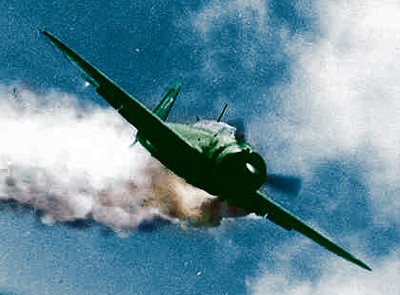
The D4Y of Yoshinori Yamaguchi
With its success as kamikaze some thought on how to dramatically increase the bomb load for "one way ticket" missions. The goal was to suspend under the fuselage a massive 800-kg bomb. The D4Y4 or dive bomber type 2 model 43 was design for this, without bomb bay doors and a fuselage chassis reinforced. It kept its powder rockets for take off as well, but now used also for the final approach. Survivability was improved for the first time with a 7-mm armor plate at the back of the pilot's head and 75-mm armored glass windshield.
Capacity of the fuel tanks was increased to 1,345 liters, and tanks at last were better protected. Increase in weight caused degraded flight performance and production started "on paper" by February 1945, from February to June, with a monhtly rate of 50-60, and a drop in July and August but a total of 296. The dominance of kamikaze tactics and for this, many D4Y4 had the rear cockpit glazing enclosed by metal sheets. Both the bombing device and radio were removed. From April 1945 machine guns were even retired and many came out with three solid-fuel boosters for their final dive.
The last "carrier Suisei" D4Y5
By the spring of 1945 the IJN staff still had plans to built 19 aircraft carriers (Taiho and Unryu class) and so the D4Y5 (dive bomber type 2 model 54) was created for them. It was better protected and had a better protection, the Nakajima NK9C "Homare 12" air-cooled engine (1,825 hp), but production at the arsenal in Hiro, never really started before the bomb drops at Hiroshima and Nagasaki.Last operations of the Suisei
Formosa became the new main base for the Suisei, all trained in suicide attacks. By January 21, 17 aircraft took off (6 D4Ysn 11 Zeros) were intercepted and mostly shot down but one manage to get through and hit the USS Langley, but also the USS Ticonderoga (three hits). She ship survived, but was sent for repairs until V-Day. The destroyer USS Maddoxwas also a write-off.By February 1945, the Home island 765th Kokutai was re-equipped with the suisei, as the 722nd Kokutai (11 D4Y3s, 2 D4Y4s). On February 18, Suisei from the 601st Kokutai (Katori airbase) had 12 D4Y3 and attacked TG.52 at Iwo Jima, refuelling in the Bonin archipelago. One suisei hit the aircraft lift, and sunk the USS Bismarck Sea, and badly damaged the veteran USS Saratoga, surviving no less than 4 Kamikaze hits, but written off. On March 18, duung a raid on Kyushu, the counterattack had Suisei operating mostly as conventional bombers, hitting USS Yorktown. On March 20, 18 Suisei were intercepted, one managed to hit the destroyer USS Powell. 10 days later, 2 "Judy" hit USS Indianapolis, flagship of Admiral Spruance.
The battle of Okinawa also saw heavy use of the "Judy", bith in traditional" bomb attacks and as kamikazes. On April 7, they damaged the battleship USS Maryland and aircraft carrier USS Hancock. On the 12th, a Suisei sank the destroyer USS Mannert L. Abel and two D4Ys crashed on veteran USS Enterprise. On April 16, 5 Suisei, hit the destroyer USS Luffy, which survived.
On May 8, D4Ys sank the LSM-190, damaged USS Birmingham and USS Bunker Hill and on June 6, the escort aircraft carrier USS Natoma Bay. Vice Admiral Matome Ugaki, the "creator" of the Kamikaze took part in the very last attack on August 15, personally leading a group of 11 D4Y3 from the 701st Kokutai. They vanished without finding the enemy, and their fate is still unclear, but likely they were intercepted by a CAP.
References
Books
Enzo Angelucci et Paolo Matricardi: U.S.A., Japon, U.R.S.S., etc... Elsevier Sequoia coll. 1978Yokosuka D4Y 'Judy' Units Mark Chambers (Author), Jim Laurier (Illustrator), Mark Postlethwaite (Illustrator)
Angelucci, Enzo (ed.). World Encyclopedia of Military Aircraft. Londres, Jane's. 1981.
Donald, David (ed.). The Encyclopedia of World Aircraft. Aerospace. 1997..
Francillon, René J. Japanese Bombers of ww2, Vol. 1. Windsor, Berkshire, UK Hylton Lacy Publishers Ltd. 1969
René J. Francillon, Japanese Aircraft of the Pacific War, Putnam & Co, 1979
Gunston, Bill. The Illustrated Encyclopedia of Combat Aircraft of Word War II. Salamander Books Ltd., 1978
Huggins, Mark. "Falling Comet: Yokosuka's Suisei Dive-Bomber". Air Enthusiast no 97, janvier/février 2002.
The I.J.N. Carrier Bomber D4Y series Suisei photo & illustrated Model Graphix 23079
Richards, M.C. and Smith, Donald S. "Aichi D3A ('Val') & Yokosuka D4Y ('Judy') Carrier Bombers of the IJNAF". Aircraft in Profile, vol. 13. Profile Publications Ltd. 1974, p.
Links
airpages.ru/
aviastar.org
historyofwar.org/
combinedfleet.com
militaryfactory.com/
planesoffame.org/

D4Y-1 IJN Shokaku March 1944

D4Y-1, 523th Kokutai "Taka Butai" Peleliu September 1944

D4Y1 of 634 Kokutai, IJN Junyo, August 1944

D4Y1c, 601 Kokutai, July 1944

D4Y-1 634 Kokutai, Junyo August 1944

D4Y-2 653 Kokutai, 263 Hikotai, Formosa October 1944
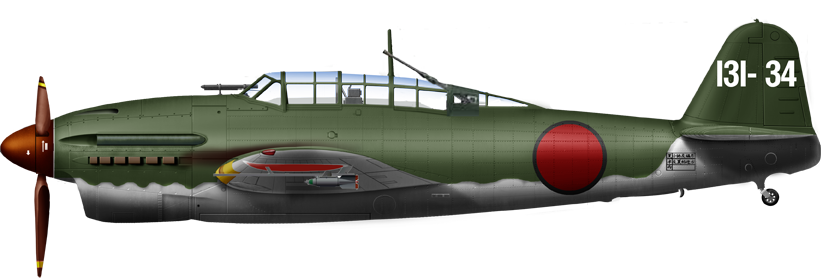
D4Y-2S night fighter, Kokutai Japan May 1945

D4Y-3 721 Kokutai, Konoke November 1944

D4Y-3 Kougeki 1st Hikotai, 601 Kokutai

D4Y-4 901 Kokutai, Kamikaze missions (note the notice the rear fuselage belly lodging for additional propulsion rockets) Okinawa, Campaign 1945
Photos
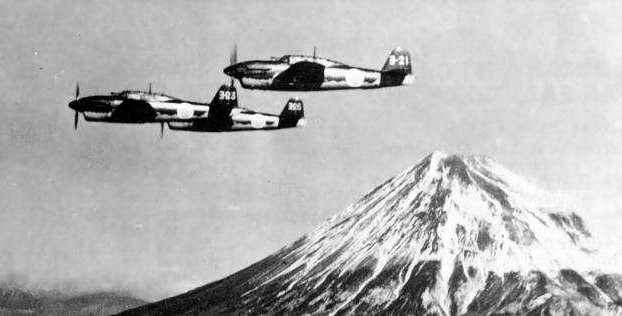
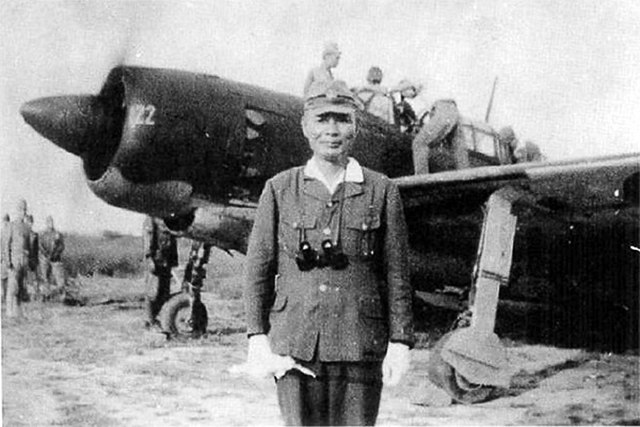
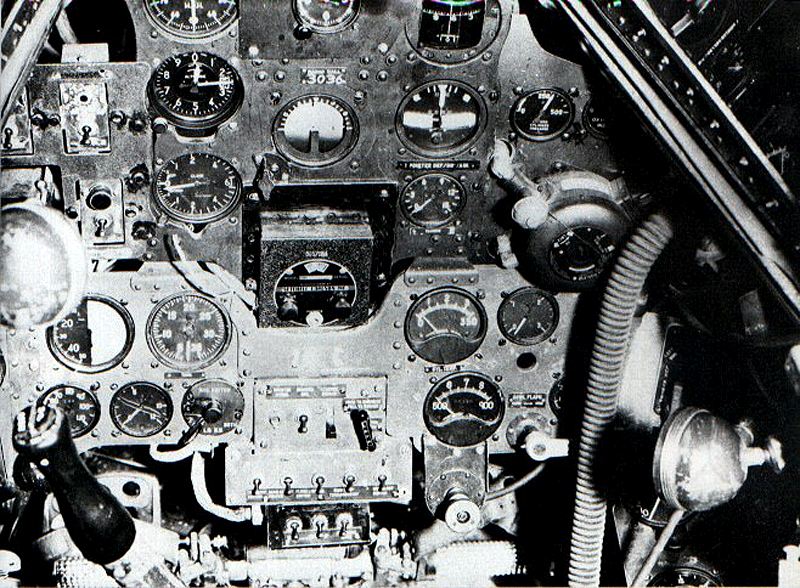
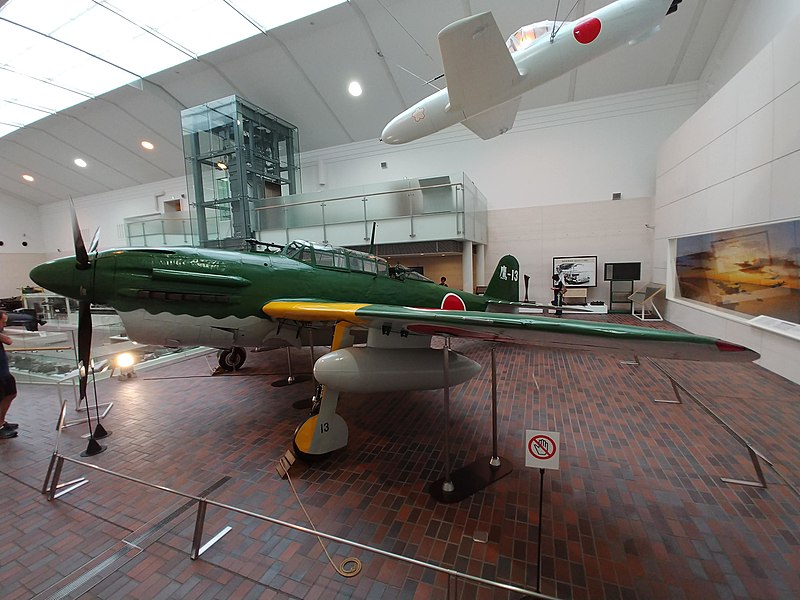
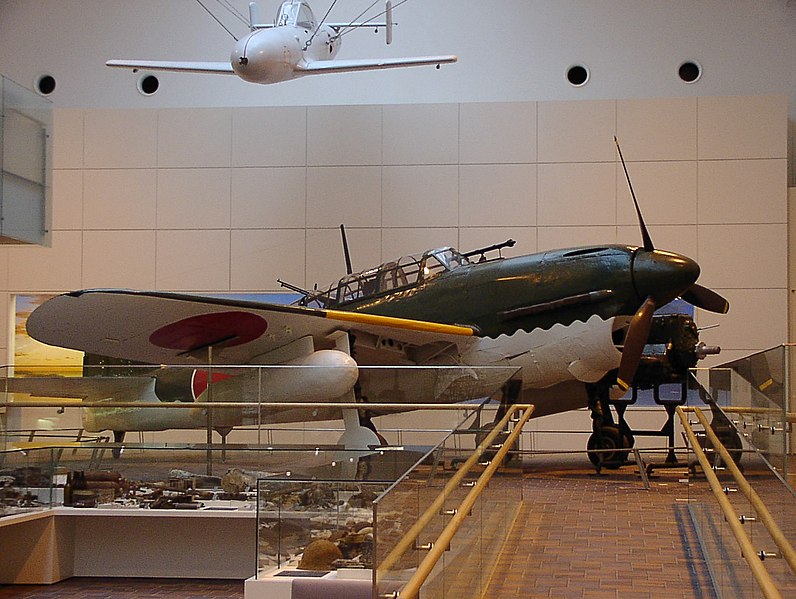

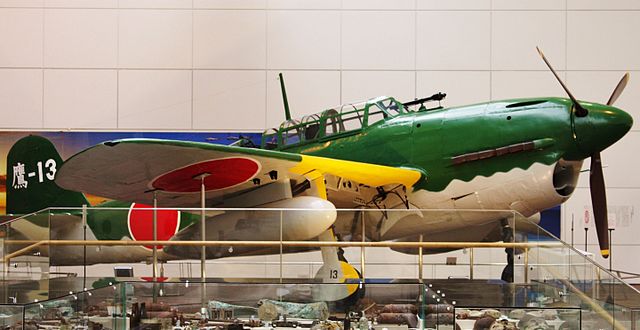


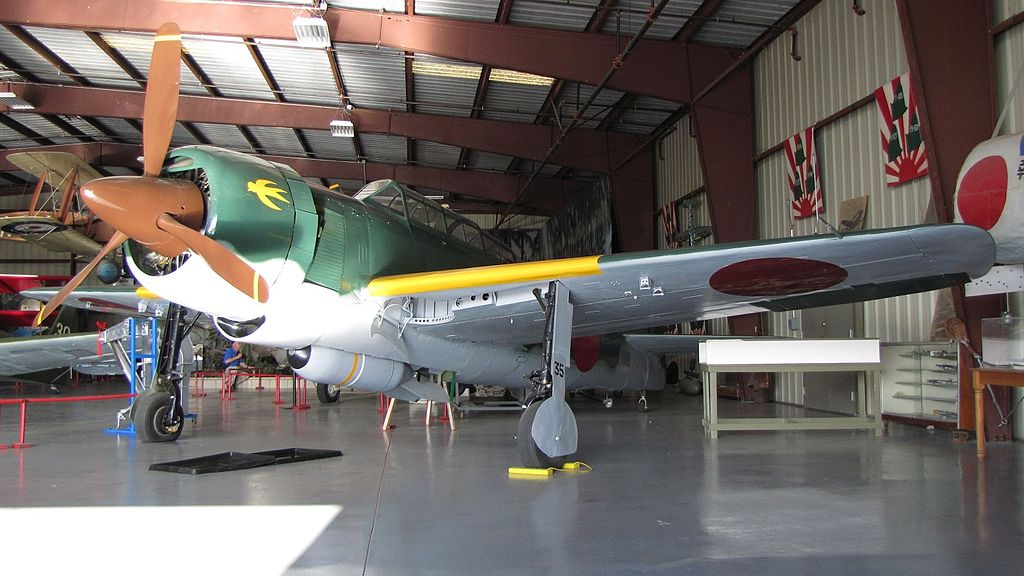
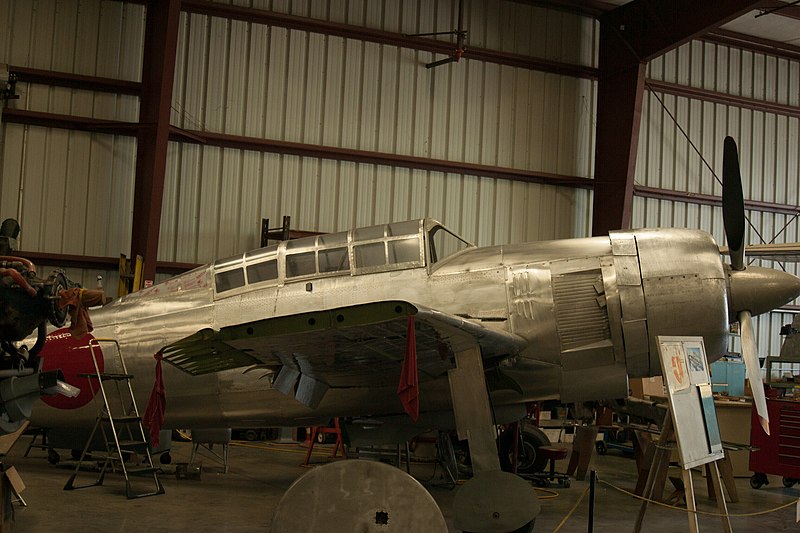

Fully restored D4Y2?, Gary Takeuchin Pinterest




- Lohner E (1913)
- Macchi M3 (1916)
- Macchi M5 (1918)
- Ansaldo ISVA (1918)
- Sopwith Baby (1916)
- Short 184 (1916)
- Fairey Campania (1917)
- Sopwith Cuckoo (1917)
- Felixstowe F.2 (1917)
- Friedrichshafen FF 33 (1916)
- Albatros W4 (1916)
- Albatros W8 (1918)
- Hanriot HD.2
- Grigorovitch M5
- IJN Farman MF.7
- IJN Yokosho Type Mo
- Yokosho Rogou Kougata (1917)
- Yokosuka Igo-Ko (1920)
- Curtiss N9 (1916)
- Aeromarine 39
- Vought VE-7
- Douglas DT (1921)
- Boeing FB.5 (1923)
- Boeing F4B (1928)
- Vought O2U/O3U Corsair (1928)
- Blackburn Blackburn (1922)
- Supermarine Seagull (1922)
- Blackburn Ripon (1926)
- Fairey IIIF (1927)
- Fairey Seal (1930)
- LGL-32 C.1 (1927)
- Caspar U1 (1921)
- Dornier Do J Wal (1922)
- Rohrbach R-III (1924)
- Mitsubishi 1MF (1923)
- Mitsubishi B1M (1923)
- Yokosuka E1Y (1923)
- Nakajima A1N (1927)
- Nakajima E2N (1927)
- Mitsubishi B2M (1927)
- Nakajima A4N (1929)
- CANT 18
WW1
✠ K.u.K. Seefliegerkorps:
 Italian Naval Aviation
Italian Naval Aviation
 RNAS
RNAS
 Marineflieger
Marineflieger
 French Naval Aviation
French Naval Aviation
 Russian Naval Aviation
Russian Naval Aviation
 IJN Air Service
IJN Air Service
 USA
USA
Interwar
 Interwar US
Interwar US
 Interwar Britain
Interwar Britain
 Interwar France
Interwar France
 Interwar Germany
Interwar Germany
 Interwar Japan
Interwar Japan
 Interwar Italy
Interwar Italy
- Curtiss SOC seagull (1934)
- Grumman FF (1931)
- Curtiss F11C Goshawk (1932)
- Grumman F2F (1933)
- Grumman F3F (1935)
- Northrop BT-1 (1935)
- Grumman J2F Duck (1936)
- Consolidated PBY Catalina (1935)
- Brewster/NAF SBN-1 (1936)
- Curtiss SBC Helldiver (1936)
- Vought SB2U Vindicator (1936)
- Brewster F2A Buffalo (1937)
- Douglas TBD Devastator (1937)
- Vought Kingfisher (1938)
- Curtiss SO3C Seamew (1939)
- Douglas SBD Dauntless (1939)
- Grumman F4F Wildcat (1940)
- F4U Corsair (NE) (1940)
- Brewster SB2A Buccaneer (1941)
- Grumman TBF/TBM Avenger (1941)
- Consolidated TBY Sea Wolf (1941)
- Grumman F6F Hellcat (1942)
- Curtiss SB2C Helldiver (1942)
- Curtiss SC Seahawk (1944)
- Grumman F8F Bearcat (1944)
- Ryan FR-1 Fireball (1944)
- Douglas AD-1 Skyraider (1945)
Fleet Air Arm
- Fairey Swordfish (1934)
- Blackburn Shark (1934)
- Supermarine Walrus (1936)
- Fairey Seafox (1936)
- Blackburn Skua (1937)
- Short Sunderland (1937)
- Blackburn Roc (1938)
- Fairey Albacore (1940)
- Fairey Fulmar (1940)
- Grumman Martlet (1941)
- Hawker sea Hurricane (1941)
- Brewster Bermuda (1942)
- Fairey Barracuda (1943)
- Fairey Firefly (1943)
- Grumman Tarpon (1943)
- Grumman Gannet (1943)
- Supermarine seafire (1943)
- Blackburn Firebrand (1944)
- Hawker Sea Fury (1944)
IJN aviation
- Aichi D1A "Susie" (1934)
- Mitsubishi A5M "Claude" (1935)
- Nakajima A4N (1935)
- Yokosuka B4Y "Jean" (1935)
- Mitsubishi G3M "Nell" (1935)
- Nakajima E8N "Dave" (1935)
- Kawanishi E7K "Alf" (1935)
- Nakajima B5N "Kate" (1937)
- Kawanishi H6K "Mavis" (1938)
- Aichi D3A "Val" (1940)
- Mitsubishi A6M "zeke" (1940)
- Nakajima E14Y "Glen" (1941)
- Nakajima B6N "Jill" (1941)
- Mitsubishi F1M "pete" (1941)
- Aichi E13A Reisu "Jake" (1941)
- Kawanishi E15K Shiun "Norm" (1941)
- Nakajima C6N Saiun "Myrt" (1942)
- Yokosuka D4Y "Judy" (1942)
- Kyushu Q1W Tokai "Lorna" (1944)
Luftwaffe
- Arado 196 (1937)
- Me109 T (1938)
- Blohm & Voss 138 Seedrache (1940)
Italian Aviation
- Savoia-Marchetti S.55
- IMAM Ro.43/44
- CANT Z.501 Gabbiano
- CANT Z.506 Airone
- CANT Z.508
- CANT Z.511
French Aeronavale
- GL.300 (1926-39)
- Levasseur PL.5 (1927)
- Potez 452 (1935)
- Loire 210 (1936)
- Loire 130 (1937)
- LN 401 (1938)
Soviet Naval Aviation
- Shavrov SH-2 (1928)
- Tupolev TB-1P (1931)
- Beriev MBR-2 (1930)
- Tupolev MR-6 (1933)
- Tupolev MTB-1 (1934)
- Beriev Be-2 (1936)
- Polikarpov I16 naval (1936)
- Tupolev MTB-2 (1937)
- Ilyushine DB-3T/TP (1937)
- Beriev Be-4 (1940)
-
Skoda Š-328V
R-XIII Idro
Fokker C.XI W (1934)
WW2
- De Havilland Sea Vixen
- Hawker Sea Hawk
- Supermarine Scimitar
- Blackburn Buccaneer
- Hawker Sea Harrier
- Douglas A4 Skyhawk
- Grumman F9F Panther
- Vought F8 Crusader
- McDonnell-Douglas F-4 Phantom-II
- North Am. A5 Vigilante
- TU-142
- Yak 38 forger
☢ Cold War
✧ NATO
 Fleet Air Arm
Fleet Air Arm
 US Navy
US Navy
☭ Warsaw Pact
Merch

Seafire Mark 45; HMS Pretoria Castle

Zeros vs its aversaries

Aichi D3A “Val” Junyo

Mitsubishi A5M poster

F4F wildcat

Macchi M5

SBD Dauntless Coral Sea

SBD Dauntless USS Enterprise

SBD-4 CV22